Confession time:
I used to be completely scared of fermenting stuff. I wanted nothing to do with it.
I’m not sure if it was some of the rather unappetizing photos of fermented foods floating around online, or my secret fear that anything I would ferment would taste like dirty socks, but I avoided fermentation for quite a while.
Pretty sad, eh? A natural-food-loving-homesteader-person who didn’t ferment… Lame.
So what changed?
Cabbage.
I had cautiously had ventured into the world of homemade sauerkraut and was completely impressed with the results. I found myself not only tolerating the kraut, but actually craving the tangy flavor and smell. And considering how the Prairie Kids were literally begging for it with their lunches, I figured it was time to get a little cozier with this whole idea of fermented foods. Especially since it didn’t taste like dirty socks.
This homemade ketchup recipe has been a perfect baby-step in my DIY fermented journey. You’ll find it has a pleasant tang, without being overpowering or weird. In fact, I’d be surprised if the uninitiated could even tell it’s fermented at all. Plus, you’ll miss out on the lovely high fructose corn syrup in store-bought ketchup. Bingo. But first, a few notes:
Why Fermented Ketchup?
Fermenting foods adds probiotic benefit to them, and we all know how important good bacteria is for our gut. Additionally, the beneficial bacteria in a fermented ketchup recipe helps it to last longer in storage, which is a big benefit for me, since I usually don’t feel like making this ketchup recipe every week. And it tastes good. BAM. The bigger question here is: Why NOT fermented ketchup?
Why Start with Tomato Paste?
There are plenty of ketchup recipes out there showing you how to turn fresh tomatoes into ketchup, but I chose to start with paste to keep things simpler. You can use homemade tomato paste OR store-bought– it’s totally up to you. To be perfectly honest, since I usually have a limited supply of local tomatoes each year, I prefer to turn my good tomatoes into sauce, since it takes such a large quantity of tomatoes to make a small amount of homemade paste.
Why Use Airlocks for Fermenting?
Last year I started working with Matt from Fermentools , and he’s been incredibly helpful in helping me to overcome my ferment-phobia.
Can you make fermented foods without an airlock system? Yup. But airlocks make the process even more fool-proof (especially for beginners) by reducing the the chance of mold, and allowing the ferment to release gases without you having to “burp” it. There are a number of air lock systems out there, but I like the Fermentools system since it fits right onto mason jars so I don’t have to buy a bunch of special jars, and it makes it easy to make big batches.
Fermented Ketchup Recipe
Yield: Makes 1 pint, but can easily be doubled, tripled, or quadrupled.
- 2 (6oz) cans of tomato paste (I used this organic brand– affiliate link) OR 1.5 cups homemade tomato paste
- 3 tablespoons maple syrup or raw honey
- 3 tablespoons raw vinegar (I used my homemade vinegar but this is a great option to purchase)
- 2 tablespoons whey OR brine from existing vegetable ferments*
- 1/4 teaspoon onion powder
- 1/2 teaspoon sea salt (I love and use this salt)
- 1/8 teaspoon black pepper
- 1/8 teaspoon allspice
*If you are wanting the beneficial probiotics in fermented ketchup, the whey/brine cannot be omitted. Here’s how to make real whey (powdered whey will NOT work), or just skim some brine from an existing ferment. I used my sauerkraut brine, and it worked beautifully.
Combine all the ingredients, tasting and adjusting the seasonings as needed.
Place the ketchup in a pint-sized mason jar, and fit with an airlock or regular lid.
Allow the homemade ketchup to sit out at room temperature for 2-3 days. If you are using a regular lid, you’ll probably need to “burp” the ketchup every day or so to prevent a build up of gases. If you are using an airlock, you don’t have to worry about it.
Move the ketchup to the refrigerator for another three days.
Enjoy on homemade burgers, homemade hash browns, or my favorite– french fries fried in beef tallow. Or eat it with a spoon. I won’t tell.
Long-Term Storage: Fermented ketchup should last 3-6 months in your fridge. I haven’t tried freezing it, but considering how well other tomato products freeze, I imagine it would work just fine.
You could technically can it if you wanted, but the high temps of the canning process would kill all the beneficial bacteria, so you might as well not ferment it in the first place if you are going to can it.
Kitchen Notes:
- If you are wanting to make a non-fermented ketchup recipe, simply omit the whey/brine, mix all the other ingredients, and place in the refrigerator immediately. It won’t last as long in storage, but if you are eating it immediately, it should be OK.
- I highly recommend making more than one jar, especially during grilling season.
- This ketchup recipe is very thick, especially after the fermentation process. If you prefer your ketchup a little thinner, feel free to add 1-2 tablespoons of water before or after it’s done fermenting.
- The best part about homemade ketchup? You can completely tailor it to fit your unique taste preferences. As written, my family loves this recipe, but if your family likes spicier ketchup, you can easily adjust the seasonings. Other common additions include: cinnamon, clove, garlic, cayenne, and/or mustard powder.
Where to Buy Fermenting Stuff?
I’ve been totally impressed with my Fermentools equipment. Like I mentioned above, the air locks are designed to work with the mason jars you already have, so you don’t have to purchase specials jars (and can easily make BIG batches of ferments, like sauerkraut, at once). I also found their powdered salt pretty handy to have around– the chart on the front of the package makes it crazy-easy to figure out exactly how much salt you need for a brine.
PrintHomemade Fermented Ketchup Recipe
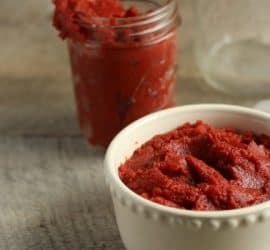
- Yield: 1 pint 1x
- Category: Condiment
Ingredients
- 2 (6oz) cans of tomato paste OR 1.5 cups homemade tomato paste (like this)
- 3 tablespoons maple syrup or raw honey
- 3 tablespoons raw vinegar (I used my homemade vinegar, but this is a great option to purchase)
- 2 tablespoons whey or brine from existing vegetable ferments*
- 1/4 teaspoon onion powder
- 1/2 teaspoon sea salt (I use this one)
- 1/8 teaspoon black pepper
- 1/8 teaspoon allspice
Instructions
- *If you are wanting the beneficial probiotics in fermented ketchup, the whey/brine cannot be omitted. Here’s how to make real whey (powdered whey will NOT work), or just skim some brine from an existing ferment. I used my sauerkraut brine, and it worked beautifully.
- Combine all the ingredients, tasting and adjusting the seasonings as needed.
- Place the ketchup in a pint-sized mason jar, and fit with an airlock or regular lid.
- Allow the homemade ketchup to sit out at room temperature for 2-3 days. If you are using a regular lid, you’ll probably need to “burp” the ketchup every day or so to prevent a build up of gases. If you are using an airlock, you don’t have to worry about it.
- Move the ketchup to the refrigerator for another three days.
- Enjoy on homemade burgers, homemade hash browns, or my favorite– french fries fried in beef tallow.
- Long-Term Storage: Fermented ketchup should last 3-6 months in your fridge. I haven’t tried freezing it, but considering how well other tomato products freeze, I imagine it would work just fine.
- You could technically can it if you wanted, but the high temps of the canning process would kill all the beneficial bacteria, so you might as well not ferment it in the first place then.
This post is sponsored by Fermentools, which means they sent me one of their air lock systems so I could try it out. However, like everything I promote here on The Prairie Homestead, I don’t promote it unless I’m actually using it and loving it, which is absolutely the case here.
More Fermented Food Recipes:
- Fermented Pickles Recipe
- How to Make Kimchi
- Fermented Rosehip Soda Recipe
- Homemade Sauerkraut Recipe
- Homemade sourdough bread
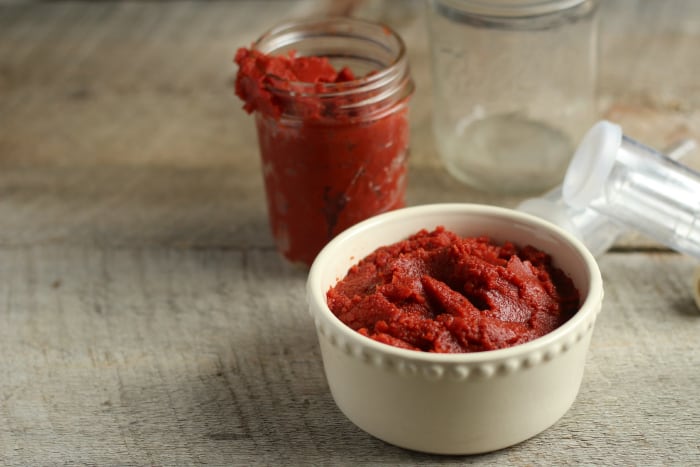
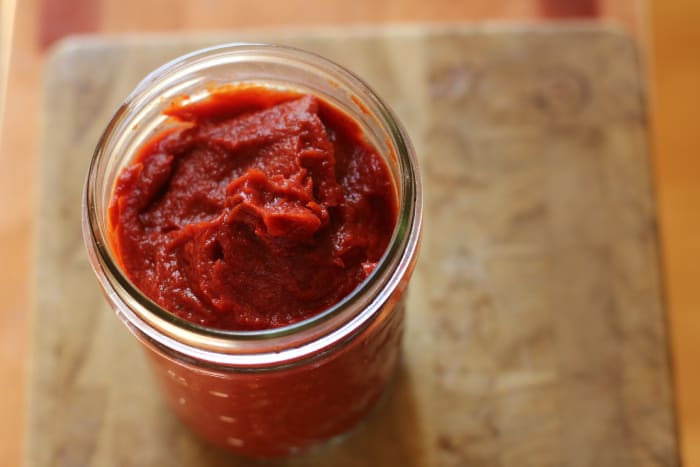
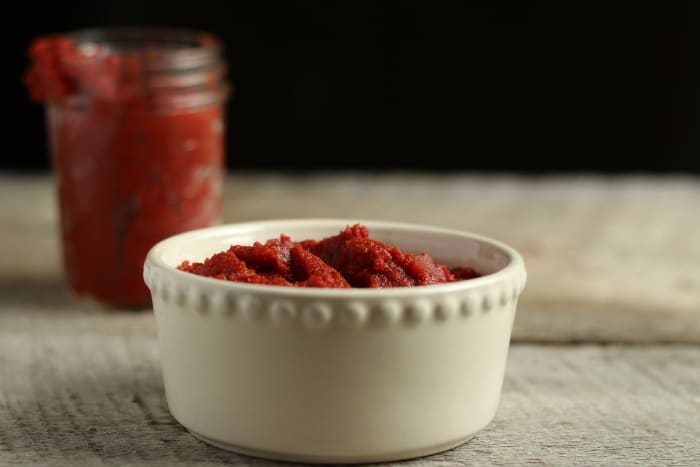
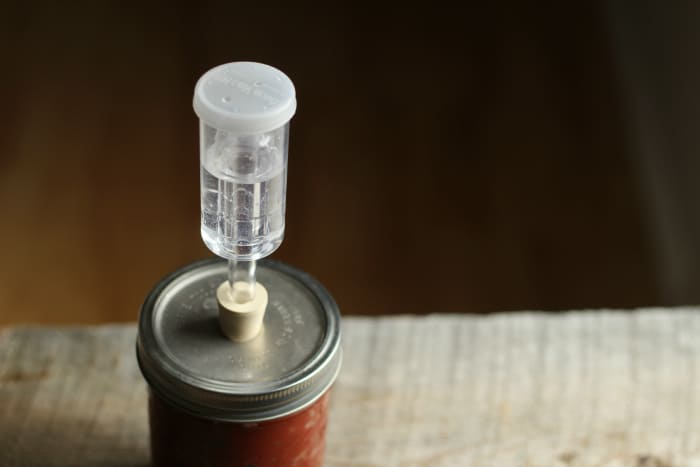
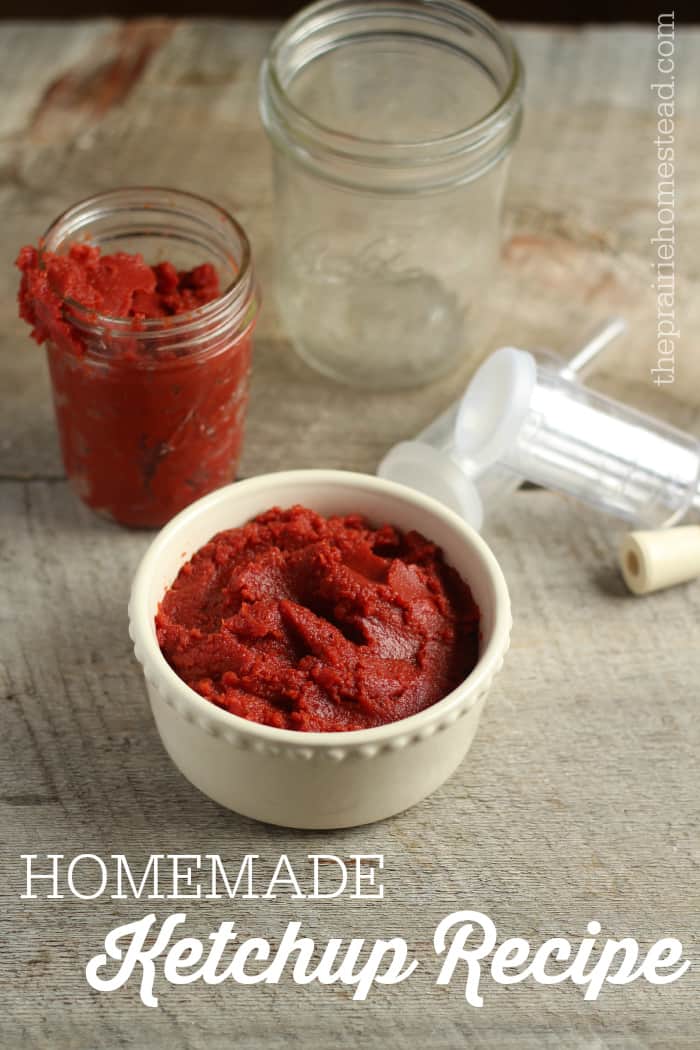
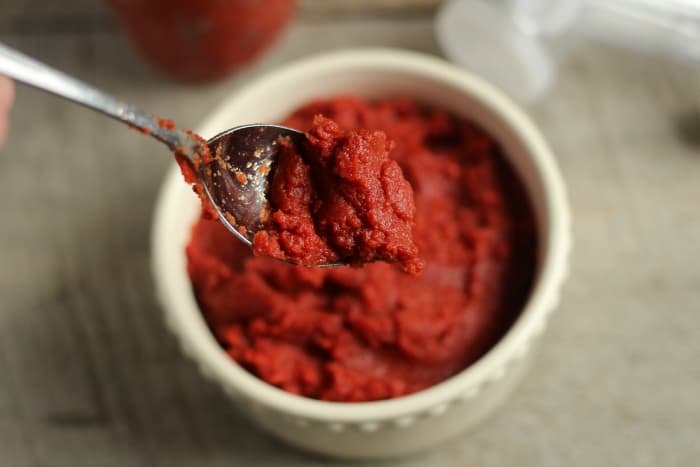


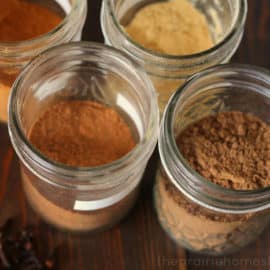
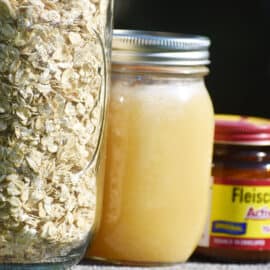



Jill,
Thanks for this recipe. As always, your posts are always timely. I have wanted a recipe for ketchup that was not made with sugar. My question is: Can you add as much water as you want to thin it to the consistency that you want it to be as opposed to just the 1-2 tablespoons of water you suggested? Is it just a matter or preference or will it effect the fermentation process? Also, if you add it after the fermentation, will it cause problems if you can it? Thanks for your answer. Always love your blog. Anmarie Hicks
Yes– you should be able to add as much water as you need to until it’s the thickness you like. The 1-2 T. is just a guideline.
This recipe looks so interesting, just reading through it makes my mouth watery! I always have a soft spot for the fermented foods, especially the fermented vegetables ( sauerkraut, kimchi, miso-pickled vegetables), but I’ve not seen a fermented ketchup recipe before! I will definitely give a try, just wondering how the taste differs to the regular ketchup?
It’s very mild, as far as fermented “tang” goes. And everyone has a slightly different opinion of what the perfect ketchup tastes like, but I think this one tastes pretty traditional.
And everyone has a slightly different opinion of what the perfect ketchup tastes like, but I think this one tastes pretty traditional.
We freeze our crock-fermented sauerkraut. (The last batch was 40 lbs.!) Will the thawed brine still be effective in your fermented ketchup recipe? And further, will frozen batches still be of value as probiotic?
Love the recipe. I keep getting organic paste, planning to do one of the ketchup recipes I have found, but have never gotten to it. I really like the idea of the fermented ketchup. Can cider vinegar or kombucha work? I have been brewing my own kombucha for a couple years and I substitute it where vinegar is called for unless advised against it. Also, If I substitute organic sugar will it affect the thickness?
Yes, sour kombucha can work too! Organic sugar should be just fine. If it’s too thick, just add a bit of water.
Do you think kombucha would work as the fermented whey or brine?
I haven’t tried kombucha for that… Hmmm… not sure how that would work
How much can the Room temp be?
I have read that adding vinegar kills the probiotics. Is this not true?
Good morning, Jill!
Thanks so much for this recipe! Fermentation has been my new kitchen-project love for nearly a year no: love it to pieces….
Responses to questions:
my experience is NO, vinegar does NOT kill the beasties: my experience is with fermenting peppers, so far – not ketchup, but my whey / vinegar / salt mix is very live and functional & just started a new jar-full with it. I’m beginning to think it’s not so different (in some ways) from sourdough starter…
So yes, you can use whey-suffused brine from one project to start another…or you can pour the whey off your containers of yogurt, sour cream, etc as they separate, and use that. That works very well too – but it is S-L-O-W. Better to make your own yogurt: then you’ll have ALL the whey you can think of uses for!
One can always adjust volume, liquid, intensity by blending in some good-quality canned tomato – a least it’s worked well with the cooked variety; but if whey can work the canned paste, there should be no problem with it working the canned tomatoes (I use Tuttorosso – excellent)
Wondering right this second how fermentation might affect my bacon ketchup….
★★★★
I’m definitely no expert, but in my limited experience, what I think I’ve gleaned is that whey is not necessary for a ferment. What is absolutely necessary is enough salt to keep the ingredients from molding. Much of what I have learned has been from Cultures for Health, such as this: https://www.culturesforhealth.com/learn/natural-fermentation/how-much-salt-brine/
Hi Jill, I recently tried this recipe for the first time and it has been a big hit! I do have one question. When you put the ketchup in the fridge after the first two-three days, do you leave the airlock on? And then replace it with a regular lid after the three days in the fridge?
★★★★★
Would the fermentation help the ketchup have a longer shelf/refrigerator life?
I’m a fermented food nut! SO good for your gut! This is the first ketchup recipe I’ve seen and I can’t wait to try it out!
I used my kimchi juice to get the ketchup started. Can’t wait to taste! Hope it adds some depth to flavor.
So delicious! I made mine with Sauerkraut Brine. After a month in the fridge it got fizzy and carbonated. Is this normal?
★★★★★
After the 3 days in the fridge, do you remove the fermentools and put a regular lid in the jar?
Could I use Pineapple vinegar or does the acidity need to be higher?
The only thing I did different is made a double batch, and used 50% honey / 50% coconut sugar. What I put in the fridge today was very good!! I’ll definitely will be making this one again. Thanks for the great recipe.
★★★★★
If I don’t have whey available, can I substitute homemade kombucha instead?
Can you use overdone kombucha as a substitute for the vinegar, since overdone kombucha is like vinegar?